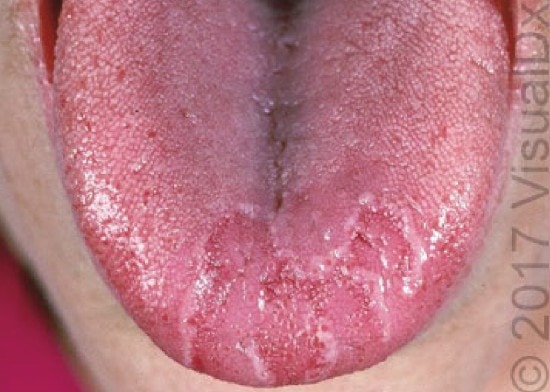The Resolution

Differential Diagnosis
- Contact stomatitis
- Migratory glossitis
- Erythroplakia
- Lichen planus
Diagnosis
This patient was diagnosed with migratory glossitis, a chronic relapsing‒recurring inflammatory/immune-mediated condition of the oral cavity of unknown etiology. Although the tongue is the most common site of occurrence, it can affect other parts of the mouth. It may begin in childhood, but also affects adults, with females twice as likely to be afflicted. Migratory glossitis is seen in approximately 1% to 2% of the population, and often accompanies fissured tongue.
Erythroplakia may look similar, especially in very late lesions when the raised white rim is not evident. However, erythroplakia would not resolve entirely, nor would it migrate over the tongue. Erythematous/erosive lichen planus or other lichenoid lesions do not tend to migrate, although they may wax and wane in any one area. These lichenoid lesions have fine white radiating striae at their periphery, rather than a linear white border.
Resolution following antifungal therapy would be expected.
Learnings
- Lesional areas are most often asymptomatic, but some patients may complain of a “burnt” or “raw” sensation. Eating hot or spicy foods will increase these symptoms, leading some patients to avoid acidic and spicy foods when the lesions are present.
- Migratory glossitis waxes and wanes and is present for decades.
- Histopathologically, migratory glossitis is characterized by a psoriasiform mucositis; several studies have suggested that the condition is somewhat more frequent in psoriatic patients. Atopic individuals may have an increased prevalence of migratory glossitis.
